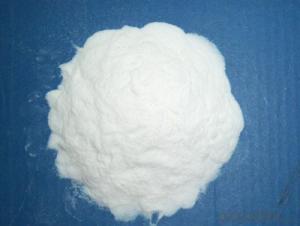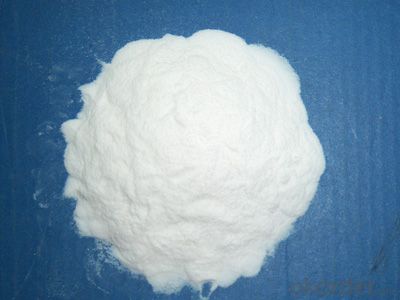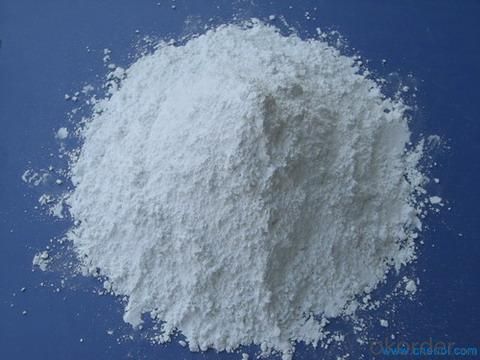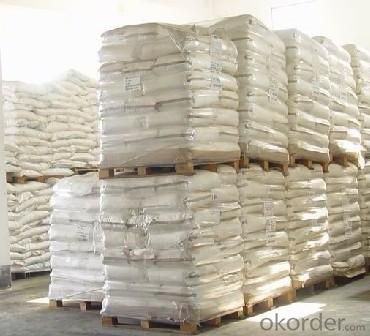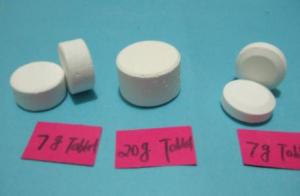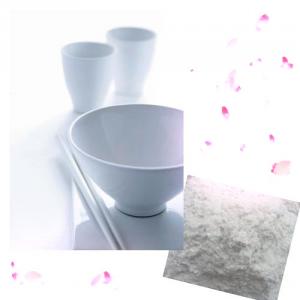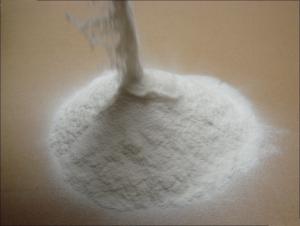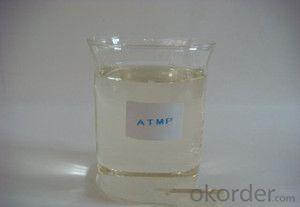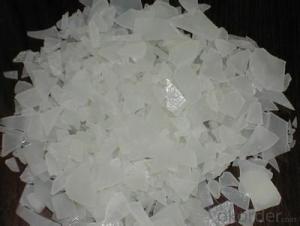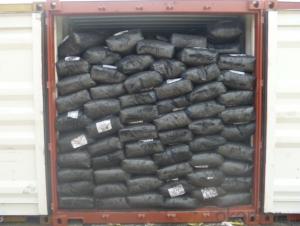White carbon black(precipitated silica)
- Loading Port:
- Qingdao
- Payment Terms:
- TT OR LC
- Min Order Qty:
- -
- Supply Capability:
- 20000 m.t./month
OKorder Service Pledge
OKorder Financial Service
You Might Also Like
Specifications
White carbon black
1.improve the tensile strength of rubber
2.good reinforcing performance
3.high wear resistance
1.Introduction:
White Carbon Black(Precipitated silica) with special physic-chemical properties, work as reinforcing transparent fillers highly valued in formulation of rubber-based blends. They lead to enhanced tensile strength, tear strength and abrasion resistance and increase hardness of vulcanized rubbers. On the other hand, They reduce consumption of rubbers and therefore reduce the cost.
2.Application:
It is widely used in silicon rubber, constrction sealant, coating, rubber, shoes, medicine, resin processing, printing ink and other industries.
1) Silicon Rubber: Improves silicon rubbers durability, rebound rate, and anti-distortion performance.
2) Plastics Industry: Improves plastic s tenacity, strength and prevents water absorption.
3) Coating Industry: Prevents agglomeration and drip. Thixotropic additives. Increase denseness and smoothness of paint.
4) Medicine Industry: Increase denseness ,floating , carrying function in medicine. It also can be used as the pesticide powder and anti-agglomeration.
3.Features:
1) Good activity and the absorption rate.
2) High reinforcing effect and chemical stability.
3) Porous surface area.
4) Good dispersibility.
4.Specication:
Type | 813 | 815 | 900A |
SiO2 | 90 | 91 | 94 |
Residue on sieve(45um)%≤ | 0.5 | 0.5 | 0.5 |
Heating Loss %≤ | 7.0 | 7.0 | 7.0 |
Ignition Loss % ≤ | 7.0 | 7.0 | 7.0 |
PH | 6.0-7.0 | 6.0-7.0 | 6.0-7.0 |
Fe mg/kg ≤ | 300 | 260 | 200 |
DBP cm³/g≤ | 2.8 | 2.8 | 3.0 |
Specific Surface m²/g | 180-220 | 200-230 | 220-260 |
conductivity μs/cm≤ | 300 | 150 | 110 |
Sulfate % ≤ | 0.3 | 0.15 | 0.1 |
Bulk Density g/ml | 0.16 | 0.16 | 0.16 |
packing | 15kg | 15kg | 15kg |
Appearance | White Powder | White Powder | White Powder |
Packaging & Delivery
| Packaging Detail: | 10 or 15 kg/bags,double-layer bag (inner layer with PE bag, outer layer with polypropylene bag) |
| Delivery Detail: | 2 weeks |
- Q: Chemistry GCSE what is a catalyst?
- A catalyst is a substance added to a reaction to speed the reaction up!
- Q: The chemical equation of heating reaction of benzene and hydrogen under the action of catalyst
- C6H6 benzene + 3H2 - (arrow) C6H12 cyclohexane (Ni catalytic heating)
- Q: pls give one or two catalysts that are used in the industry for example:Rhodium catalyst in a catalytic converter of a car or the Iron catalyst for making ammoniaTHANKS :)
- u . s . a . of america has an excellent style of organic gas. In theory that's accessible to have an electric powered motor force a compressor to take the low stress gas to make it dense adequate to get adequate interior the vehicle to run for a mutually as (in actuality, gas stations with organic gas pumps do it precisely like that, that's no longer trucked to them, we've a pair in Dallas) the real undertaking is that, specific it will be pressurized, requiring a greater perfect tank than propane, that's a liquid interior the tank, and the tank must be a cumbersome cylinder for capability or numerous smaller cylinders area by making use of area. Getting this into the physique of the vehicle devoid of doing away with all the storage/bags area isn't ordinary. And ultimate efforts nevertheless finally end up with the miles in line with fill up being decrease than the gas which inserts in a small area.
- Q: What are the requirements for the catalyst for the chemical industry?
- Generally find a few, according to the cost and cost of cost, choose cost-effective
- Q: What suitable catalysts can I use for the reaction between Hydrochloric acid and zinc metal?
- Something that can cause a reaction, speed up or slow down a reaction, without changing itself.. structure yea..
- Q: Will the catalyst change in the chemical reaction?
- The catalyst is actually involved in the chemical reaction, the catalyst is added to the reaction, becomes the other material, and then the reaction becomes back, and appears to have no change, actually involved in the change, but the end result the catalyst did not change
- Q: The last question asked no one answered this question.
- First of all now the most common way to change the ligand.
- Q: Can the catalyst be a reactant in chemistry?
- There is also a saying that the catalyst participates in the chemical reaction. In a general chemical reaction, the effect of the catalyst is to reduce the activation energy required for the reaction to occur, essentially to turn a more difficult reaction into two, In the second reaction, the catalyst in the first reaction plays the role of the reactant, and the catalyst in the second reaction plays the role of the product, so that the catalyst is not present before and after the reaction Variety.
- Q: In the chemical reaction, the rate of decomposition reaction is related to the quality of the catalyst?
- There are relationships
- Q: Can you describe at least 4 ways a catalyst can lower the activation energy of a reaction?
- To see how a catalyst accelerates the reaction, we need to look at the potential energy diagram shown below which compares the non-catalytic and the catalytic reaction. For the non-catalytic reaction, the figure is simply the familiar way to visualize the Arrhenius equation: the reaction proceeds when A and B collide with succificient energy to overcome the activation barrier. The change in Gibbs free energy between reactants, A + B, and the product P is delta G. The catalytic reaction starts by bonding of the reactants A and B to the catalyst, in a spontaneous reaction. Hence, the formation of this complex is exothermic and the free energy is lowered. There then follows the reaction between A and B while they are bound to the catalyst. This step is associated with an activation energy; however, it is significantly lower than that for the uncatalyzed reaction. Finally, the product P seperates from the catalyst in an endothermic step. The energy diagram illustrates 4 ways the catalyst works : The catalyst offers an alternative path for the reaction that is energetically more favorable The activation energy of the catalytic reaction is significantly smaller than that of the uncatalyzed reaction; hence the rate of the catalytic reaction is much larger The overall change in free energy for the catalytic reaction equals that of the uncatalyzed reaction. Hence, the catalyst does not affect the equilibrium constant for the overall reaction. A catalyst cannot change the thermodynamics of a reaction but it can change the kinetics. The catalyst accelerates both the forward and the reverse reaction to the same extent. In other words, if a catalyst accelerates the formation of product P from A and B, it will do the same for the decomposition of P into A and B.
Send your message to us
White carbon black(precipitated silica)
- Loading Port:
- Qingdao
- Payment Terms:
- TT OR LC
- Min Order Qty:
- -
- Supply Capability:
- 20000 m.t./month
OKorder Service Pledge
OKorder Financial Service
Similar products
Hot products
Hot Searches
Related keywords
